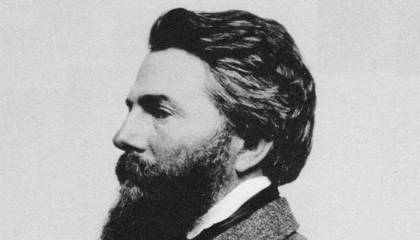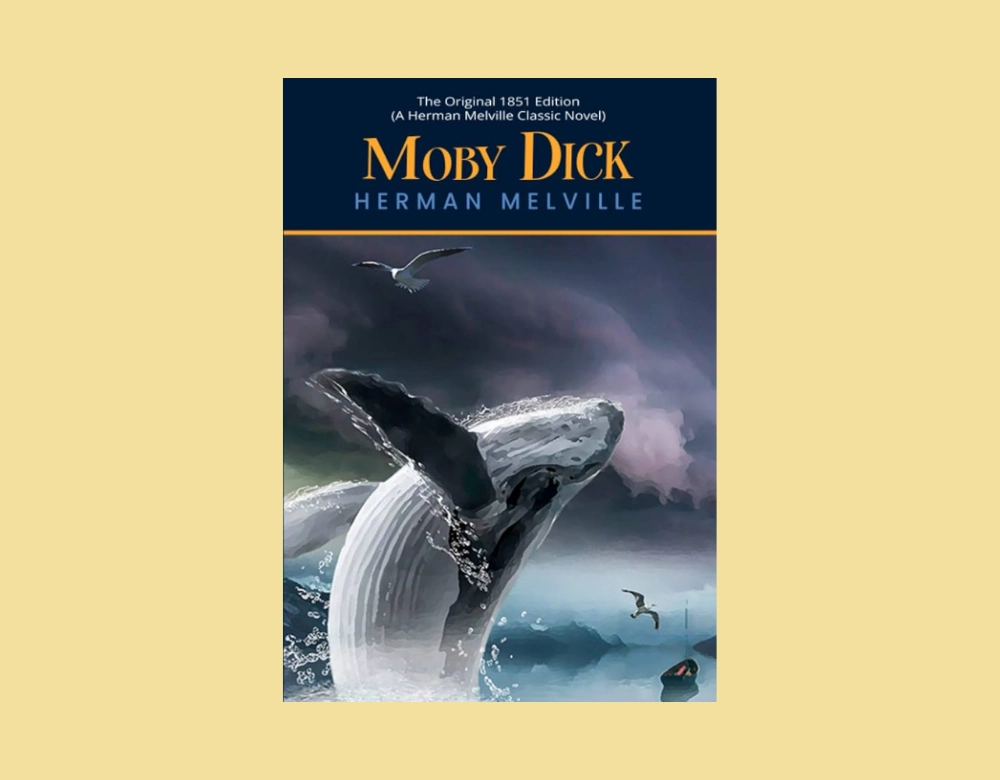Herman Melville’s Deep Sea Life and the Spark of the Whale
So, Herman Melville. This guy wasn’t some soft-handed academic, seriously. Born in 1819, his life was completely defined by the sea; he went to sea as a whaler on the Acushnet in 1841 an experience that was absolutely brutal and those few years gave him the raw, encyclopedic material that forms the backbone of Moby Dick. He actually lived the whaling life, man, which gives the book its unbelievable authority. The book itself dropped in 1851, and honestly, it was a total commercial flop when it came out. People just weren’t ready for it; it was too weird.
- Early Success: He found fame first with adventure books like Typee (easy beach reading, basically). But he wanted more, he wanted to write a serious book. He totally risked his career to write Moby Dick.
- Literary Dedication: He dedicated the book to Nathaniel Hawthorne, his neighbor and friend, showing his deep connection to the American Romantic movement (though his vision was way darker than theirs).
- Genre Flip: While it looks like an adventure novel about whaling, it’s really an incredibly deep philosophical epic and a work of Symbolism. The whale hunt is basically the world’s stage.
Melville’s Core Beliefs: The Philosophy Behind the Chase
Melville’s philosophy is intense, totally dark, and beautifully complex. He was obsessed with questions that the religious Victorians were just too scared to ask: Is God good? Is Nature indifferent? Does man control his own destiny? The whole book is a relentless interrogation of fate, free will, and the limits of human knowledge.
| Core Philosophical Theme | What it Means (The Gist of It) |
| Destructive Obsession (Ahab’s Fate) | Captain Ahab isn’t just mad; he embodies the destructive power of a single, all-consuming obsession. He sacrifices everything his crew, his ship, his life for revenge on a seemingly indifferent universe. That’s pure, crazy fatalism. |
| The Indifference of Nature | Moby Dick isn’t evil; he’s just a force of nature huge, white, and totally non-human. Melville argues that the terrifying part of the universe isn’t its malice, but its complete lack of human meaning or moral concern. |
| The Microcosm of Humanity | The ship Pequod is a metaphor for the whole world. It’s crewed by people from every race and nation, all united by Ahab’s singular, terrifying quest. It’s an early, complicated vision of American diversity, but united by tragedy. |
| The Search for Truth (The Unknowable) | The crew is desperate to understand the whale, but he remains white, spectral, and totally elusive. Melville shows that the ultimate, absolute Truth is often unknowable, maybe even empty. |
Required Reading: Why Moby Dick Is the American Epic

Why University Students Must Conquer This Giant Text
If you’re studying American literature, philosophy, or environmental ethics, Herman Melville’s Moby Dick is absolutely non-negotiable. It is the definitive 19th-century American epic, challenging the simpler optimism of the time (think Emerson or Thoreau) with a darker, more skeptical view of human nature and destiny.
It is absolutely crucial for students because:
- Symbolism and Allegory: It’s a masterclass in how to use objects (the whale, the ship, the doubloon) to represent huge, abstract concepts (God, fate, the human soul). Analyzing this is vital for deep literary thinking.
- Encyclopedic Structure: The book constantly jumps from narrative to incredibly detailed chapters on the technicalities of whaling, the types of whales, etc. This shows how an author can weave deep non-fiction knowledge into a narrative structure, making the world feel completely real.
- Rhetoric and Voice: The language shifts wildly from the totally formal, almost Shakespearean monologues of Ahab to the informal, folksy narration of Ishmael. This rhetorical complexity is a massive lesson in voice and tone.
What to Read Next: Further Deep Dives into American Obsession
Once you’ve escaped the doomed voyage of the Pequod, you’ll definitely want to explore other works that share Melville’s bleak vision or complex philosophical depth.
| Recommended Reading | The Direct Connection to Moby Dick’s Themes |
| Billy Budd, Sailor (Melville) | Melville’s final novel, dealing with the nature of good and evil, military justice, and the conflict between law and morality on the high seas. It shares the heavy, philosophical tone. |
| Walden (Henry David Thoreau) | The opposite of Moby Dick. Thoreau seeks simple, direct understanding through communion with Nature, whereas Ahab seeks to conquer Nature. It’s a crucial contrast in American thought. |
| The Old Man and the Sea (Ernest Hemingway) | A 20th-century response to the Epic. It’s a concise, totally minimalist tale of a fisherman and a giant fish. It keeps the themes of endurance, dignity, and man’s relationship with the natural world, but without the philosophical digressions. |
The Cinematic Dream: Moby Dick’s Impact on Drama
How Melville’s Obsession Translates to Visual Media
Look, the influence of Moby Dick on the visual arts especially film is huge because the story is built on these immense, unforgettable visual set pieces: the sudden appearance of the white whale, the savage storm, the sinking of the Pequod. It’s pure, giant spectacle. The entire concept of the obsessive anti-hero battling a colossal, unstoppable force? That’s Ahab’s legacy.
It set a standard for cinematic tales of destructive obsession and the awesome, indifferent power of the sea. Every sea movie, every movie about chasing an ultimate, elusive goal, owes something to this text.
- On Direction: It popularized the use of a dramatic, isolated setting (the ship) to intensify the psychological drama. The ship is a stage where madness unfolds totally unchecked.
- Performance: Ahab’s role demands a performance of total, towering, monomaniacal rage and prophetic self-destruction. The actor must project the sheer weight of a soul at war with the universe. That’s tough.
Key Adaptations: Moby Dick on the Big Screen and Beyond
Adapting this book is totally difficult because of the crazy philosophical digressions (all the chapters on ropes and whale oil). Directors usually have to sacrifice the “whale science” for the “Ahab madness.”
| Adaptation Type | Key Example/Details | Why It’s Famous/Relevant |
| The 1956 Film | Directed by John Huston, starring Gregory Peck as Ahab. Considered the classic version. | Huston totally captured the visual terror of the hunt and Peck’s performance is iconic, even though he wasn’t Melville’s idea of a frail prophet. |
| In the Heart of the Sea (2015) | Directed by Ron Howard. This film focuses on the real events that inspired Moby Dick (the sinking of the whaler Essex). | Showed that the historical fact behind the novel is just as terrifying as the fiction, proving the book’s grounding in brutal reality. |
| Modern References | The character of Captain Ahab is the ultimate shorthand for obsessive pursuit in any medium (music, movies, TV). Everyone gets the reference immediately. | Proves the story’s cultural saturation; you don’t need the whole book, just the captain’s name, to understand the theme. |
Final Thoughts: The Enduring Pursuit of the White Whale
So, we finish our look at Herman Melville’s Moby Dick. Why does this long, difficult, strange book remain utterly central to understanding American and frankly, human ambition? Because it’s the ultimate statement on the impossibility of absolute conquest, whether of nature, of an enemy, or of the mysterious core of existence itself.
- Melville permanently etched the idea that some battles are unwinnable, not because we lack strength, but because the thing we are fighting is indifferent and ultimately unknowable.
- Ishmael (the sole survivor) gives us the final, terrifying truth: the only way to survive obsession is to remain a detached, philosophical observer, not a participant in the madness.
The book is an absolute, permanent warning about the dangers of projecting our own rage and meaning onto a vast, totally silent universe. Call me Ishmael.

